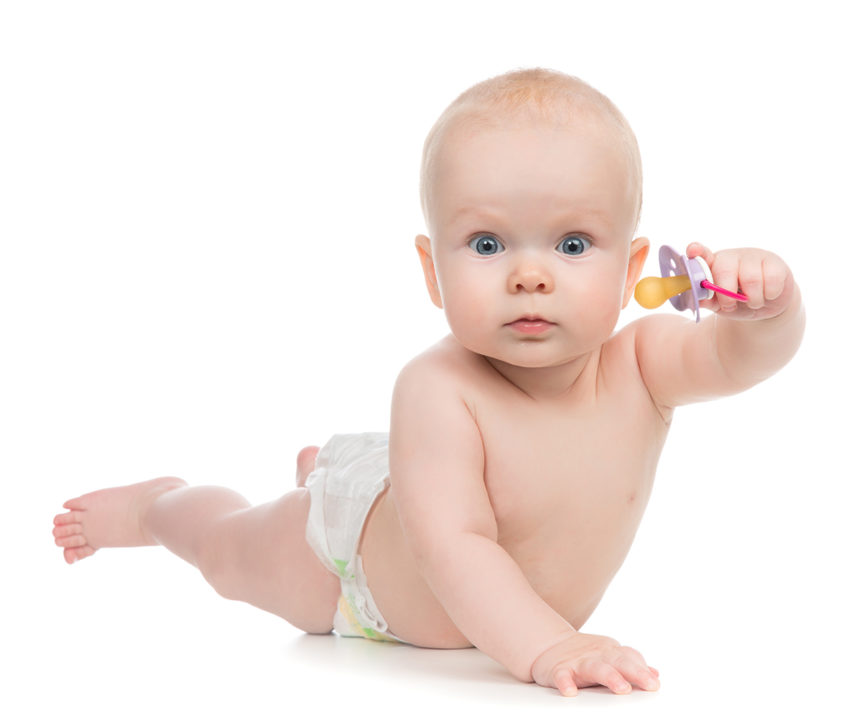Infant sucking is natural and a large percentage of infants use a pacifier at one time or another. However, prolonged pacifier use may cause crooked teeth, problems with the child’s bite, and speech issues. What is good pacifier care? When is a good time to get rid of it to avoid these changes? How to do it? Great questions!
While the pacifier is being used we want to remind parents of some key practices:
- Don’t use your saliva to clean a fallen pacifier (or anything else that goes into the child’s mouth), the bacteria that cause cavities is contagious
- Never dip the pacifier into anything sweet before placing it in the infants mouth
- Never attach the pacifier to the child or the crib for on-demand use
- Avoid pacifiers that have a shield smaller than the mouth of the child
- Dental problems resulting from a pacifier are usually avoided if the habit is discontinued before age 3, but ultimately the severity of any changes can vary and are related to the frequency, duration and intensity of the sucking habit.
Most children stop using the pacifier on their own, but sometimes a little help is needed from the family. We generally recommend that around 2 ½ years old caregivers begin to encourage a child to stop using the pacifier. Our favorite techniques involve your child giving the pacifiers as a gift to a baby cousin, or under the pillow to the tooth fairy in exchange for a “big kid” present.
It’s important to remember, though, that a pacifier is usually a method of self-soothing for the child. As such, it’s best to be flexible with the timing and consider any major changes that the child may encounter: a new sibling, starting day care, a parent going back to work, moving homes. Otherwise a child may begin another habit in its place, like nail biting or thumb sucking. Each child, home and situation is different and we are here anytime to help guide you through the process!

